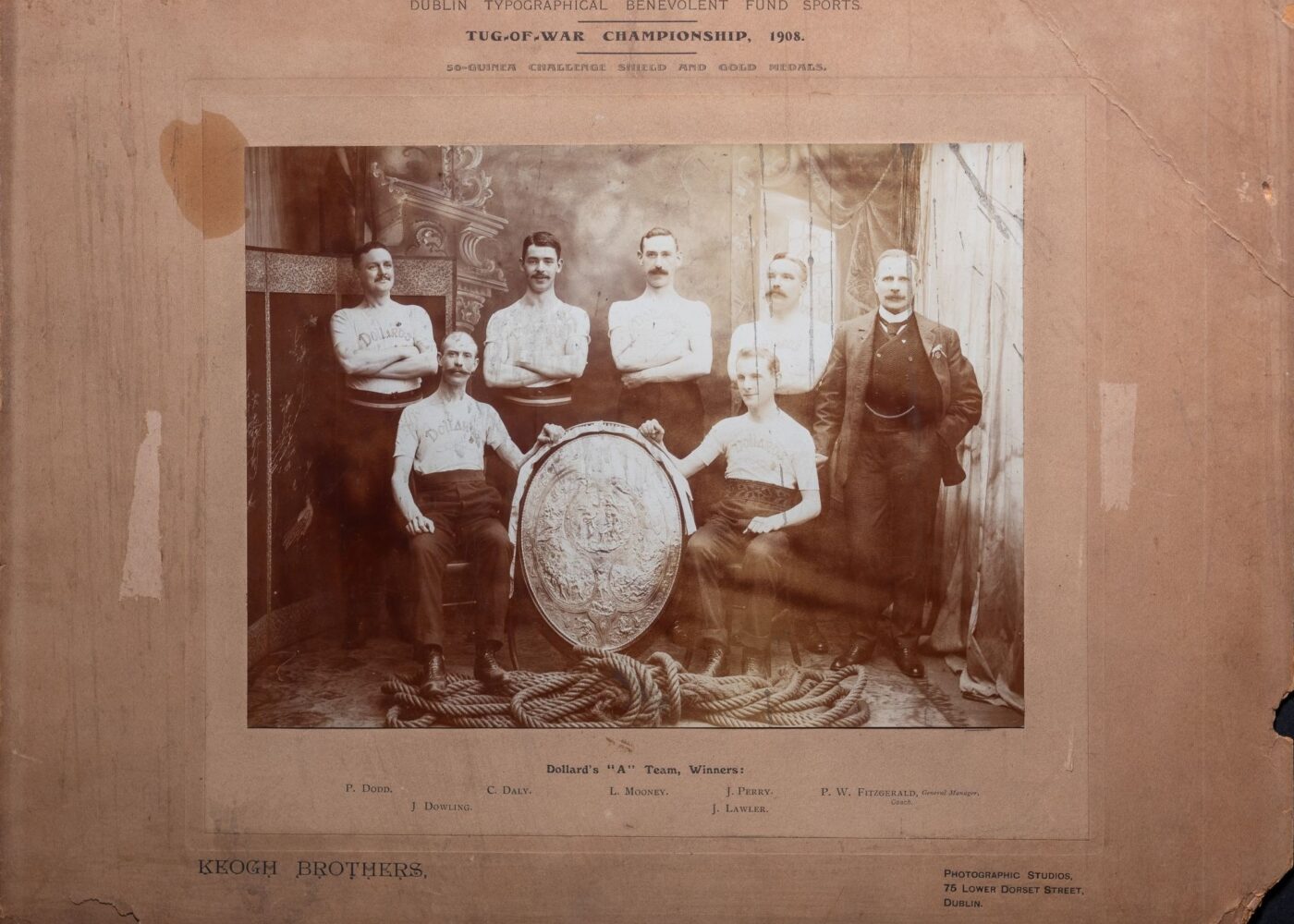Tug-of-War Championship Photograph (1908)



What did the Dublin print trade and the Olympic Games have in common? Tug-of-war, of course.
This photograph from the museum archive features the winning team of the 1908 Dublin Typographical Benevolent fund tug-of-war championship. Six players and a coach from Dollard’s A Team pose before the 50-guinea challenge shield, with a tug-of-war rope coiled below. The photograph was taken by the Keogh Brothers, who operated a studio at 75 Lower Dorset Street.
Founded in 1869, the Dublin Typographical Benevolent Fund was established to provide aid to aged or injured printers, and to the families of those deceased. Throughout the later nineteenth century, the fund sought donations from those at home and abroad, appealing to donors to support Irish printing and publishing.
As the photograph shows, this fundraising activity continued into the twentieth century, now taking the form of a popular sporting event. The history of tug-of-war stretches back thousands of years. Versions of the sport appeared across different cultures, including ancient Egypt and Greece. It became a popular activity in Europe during the late nineteenth century, when it was transformed into a formally organized sport.
Across Ireland and the United Kingdom, police forces, fire brigades, and military regiments formed their own tug-of-war teams. In 1893, the Dublin Metropolitan Police enjoyed a moment of fame after unexpectedly defeating the distinguished Glasgow Police team. The popularity of the sport led to its inclusion in the Olympic Games from 1900 onwards. In 1908, the same year that the Dublin Typographical Benevolent Fund held its competition, four Irish tug-of-war players competed at the games in London. As Ireland could not enter as an independent nation at this time, Irish athletes often competed within the Great Britain team.
Unusually, there were three different British teams this year, who played against each other as well as the American and Swedish teams. Of the four Irish players, two represented the United States, one the Liverpool Police, and another the London City Police. After a series of matches—one of which involved accusations of cheating—the London City Police won the gold medal. Tug-of-war would appear in two more Olympic events before being discontinued in 1920.
However, the sport has remained a popular pastime across Ireland. Now governed by Tug of War Ireland (founded in 1967 as the Irish Tug of War Association), Irish competitions follow the regulations set by the Tug of War International Federation.
The specific rules of the sport have changed throughout the years. While the Dublin Metropolitan Police team included ten men, only six players featured in the Dublin Typographical Benevolent Fund photo. Similar to today, the Olympic teams from 1908 onwards were limited to eight players, with winning teams achieving the best of three tugs. Modern regulations also outline restrictions relating to aspects such as team weight, shoe size, and rope length.
Just as tug-of-war has continued to serve as a leisure activity for years, it also still features within charity fundraising events. And while it may not enjoy the same recognition as it did one-hundred years ago, it forms the basis of a dedicated player community within the country. With new sports being introduced into the Olympic Games in recent years, we may even witness its reappearance within the international event.
#OpentheArchives posts